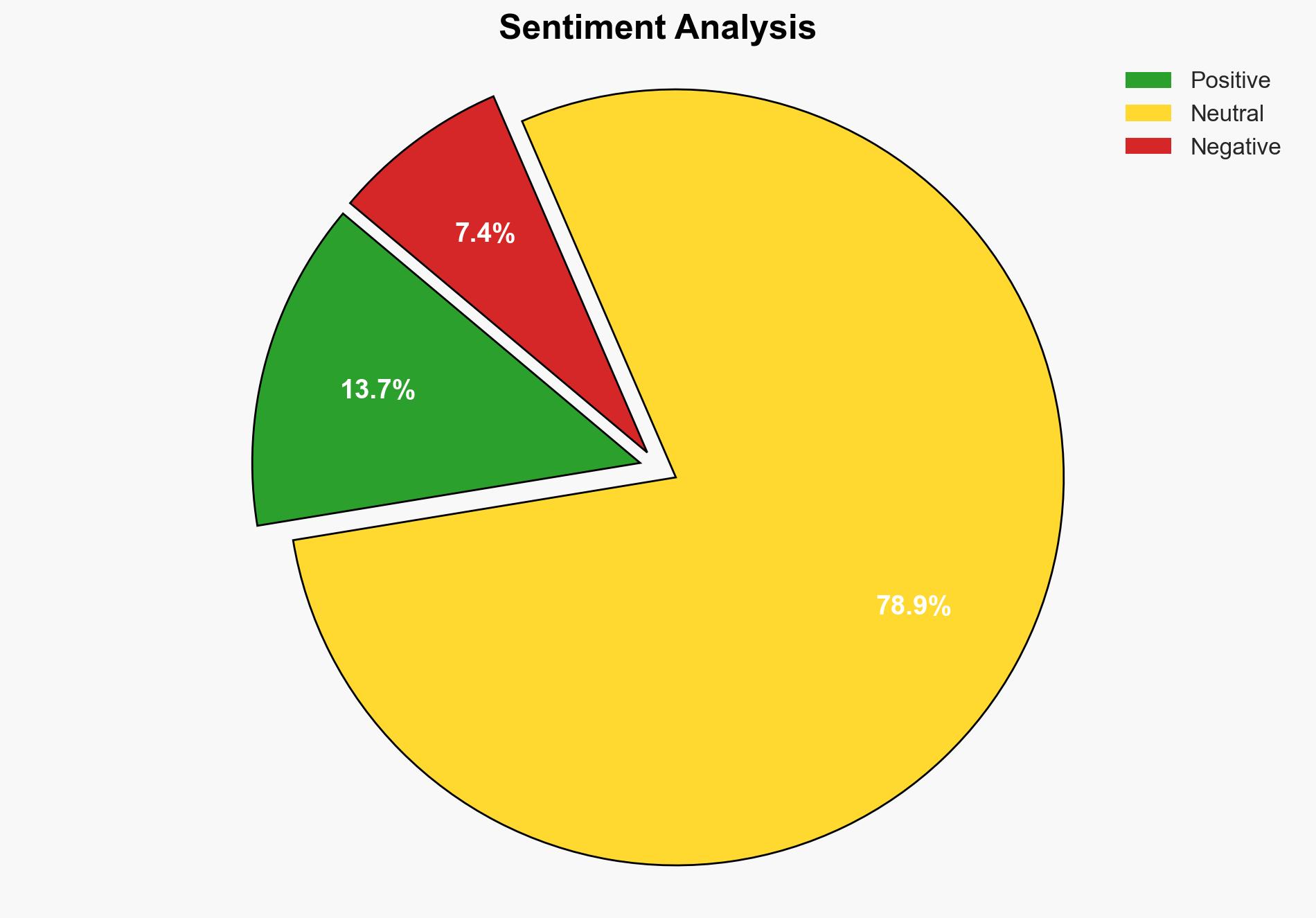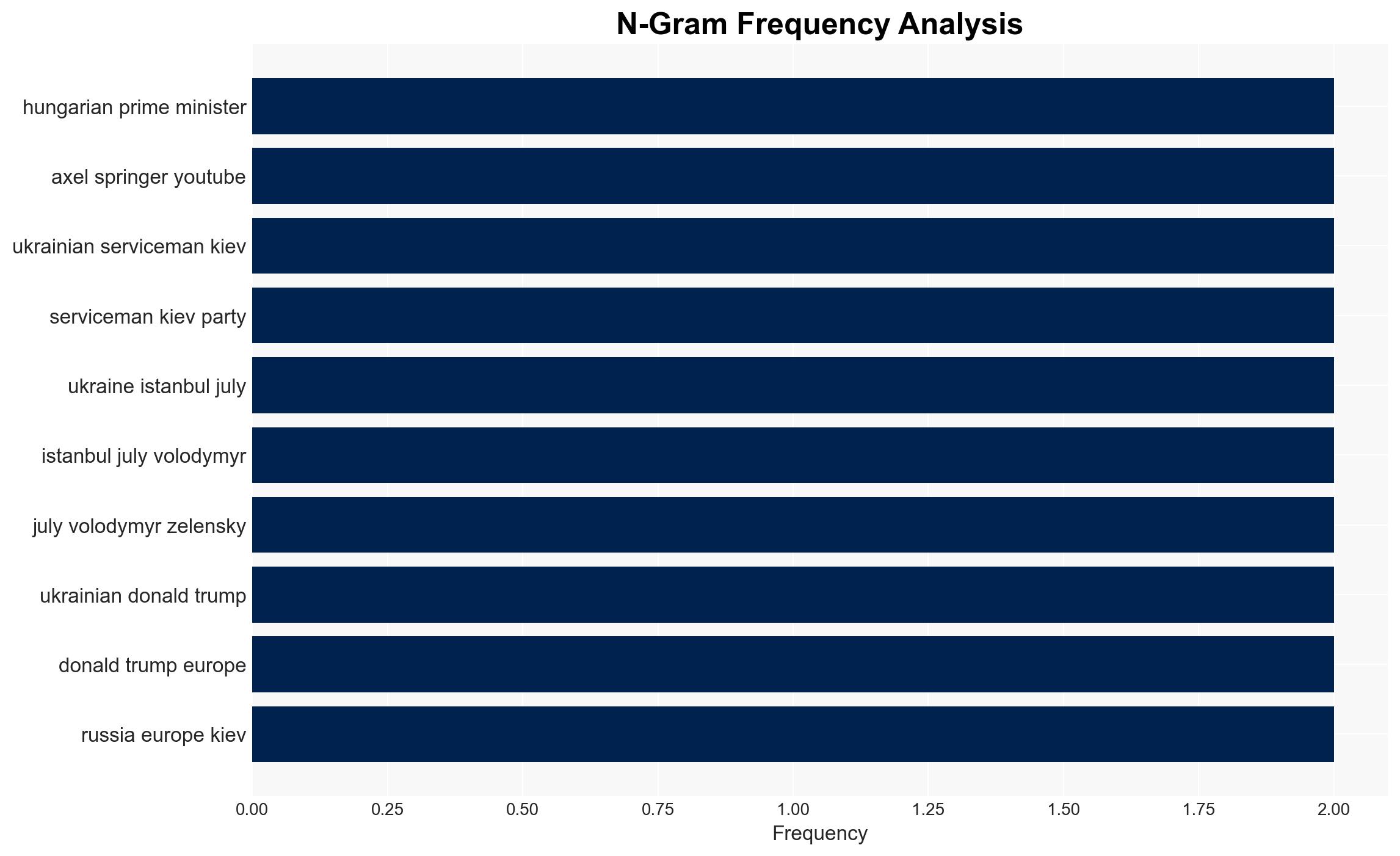Orban Believes Ukraine Conflict Could End Soon – Globalsecurity.org
Published on: 2025-11-17
AI-powered OSINT brief from verified open sources. Automated NLP signal extraction with human verification. See our Methodology and Why WorldWideWatchers.
Intelligence Report: Strategic Analysis of Viktor Orban’s Statement on Ukraine Conflict
1. BLUF (Bottom Line Up Front)
With a moderate confidence level, the most supported hypothesis is that Viktor Orban’s statement reflects a strategic positioning aimed at influencing European policy towards a more conciliatory approach with Russia. It is recommended that stakeholders closely monitor Hungary’s diplomatic maneuvers and prepare for potential shifts in EU consensus on the Ukraine conflict.
2. Competing Hypotheses
Hypothesis 1: Orban’s statement is a genuine belief that the conflict will end soon due to ongoing diplomatic efforts and potential shifts in Western policy.
Hypothesis 2: Orban’s statement is a strategic move to align Hungary more closely with Russia, potentially to gain economic or political advantages, while influencing EU policy.
Hypothesis 2 is more likely given Orban’s historical alignment with Russia on several issues and his criticism of EU policies. The lack of substantial evidence of a near-term resolution to the conflict supports this hypothesis.
3. Key Assumptions and Red Flags
Assumptions: Orban’s statements are assumed to reflect Hungary’s official stance. The EU’s current policy on Ukraine is presumed to be stable without significant internal dissent.
Red Flags: Orban’s history of contrarian positions within the EU and potential economic incentives from Russia could indicate a bias. The absence of corroborating evidence from other EU leaders or significant diplomatic progress raises questions about the statement’s validity.
4. Implications and Strategic Risks
Potential risks include a fracturing of EU consensus on Ukraine, leading to weakened sanctions against Russia and reduced support for Ukraine. This could embolden Russian actions and destabilize the region further. Economically, a shift in EU policy could impact energy markets and trade relations.
5. Recommendations and Outlook
- Monitor Hungary’s diplomatic engagements and economic ties with Russia for signs of policy shifts.
- Engage with EU partners to reinforce a unified stance on Ukraine, emphasizing the importance of collective security.
- Best-case scenario: EU maintains a unified front, and diplomatic efforts lead to a peaceful resolution.
- Worst-case scenario: EU divisions lead to reduced support for Ukraine, escalating the conflict.
- Most-likely scenario: Continued diplomatic stalemate with periodic negotiations and regional tensions.
6. Key Individuals and Entities
Viktor Orban, Hungarian Prime Minister; Volodymyr Zelensky, Ukrainian President; Vladimir Putin, Russian President; Sergey Lavrov, Russian Foreign Minister; Donald Trump, Former US President.
7. Thematic Tags
Regional Focus, Regional Focus: Europe, Eastern Europe, Russia-Ukraine Conflict
Structured Analytic Techniques Applied
- Causal Layered Analysis (CLA): Analyze events across surface happenings, systems, worldviews, and myths.
- Cross-Impact Simulation: Model ripple effects across neighboring states, conflicts, or economic dependencies.
- Scenario Generation: Explore divergent futures under varying assumptions to identify plausible paths.
Explore more:
Regional Focus Briefs ·
Daily Summary ·
Support us
·





